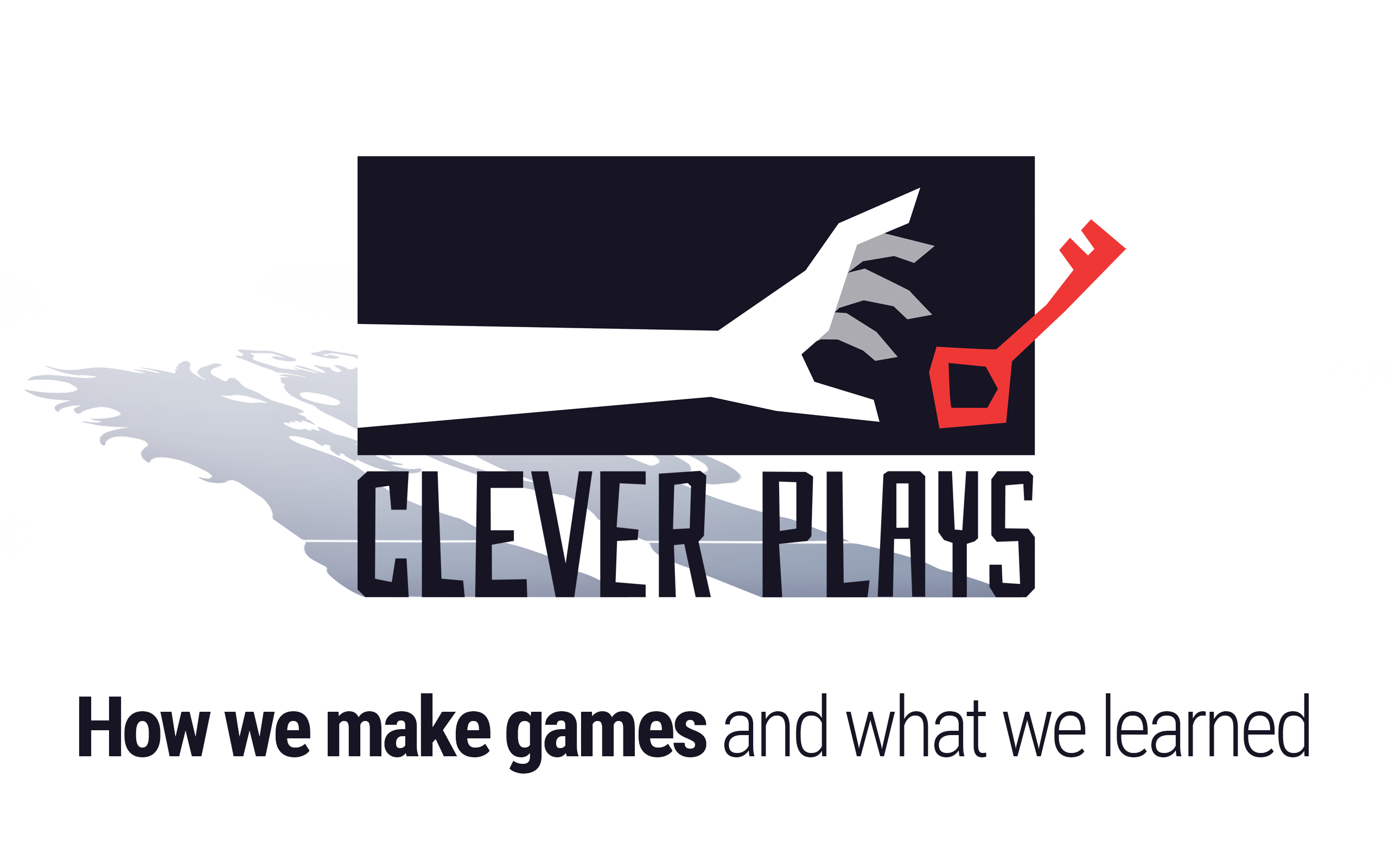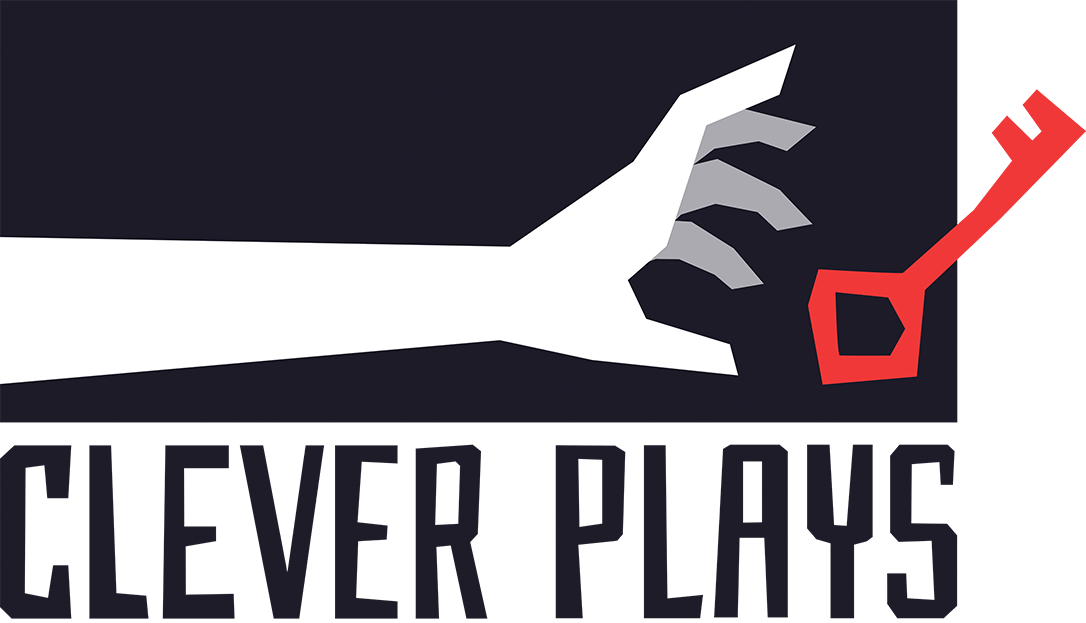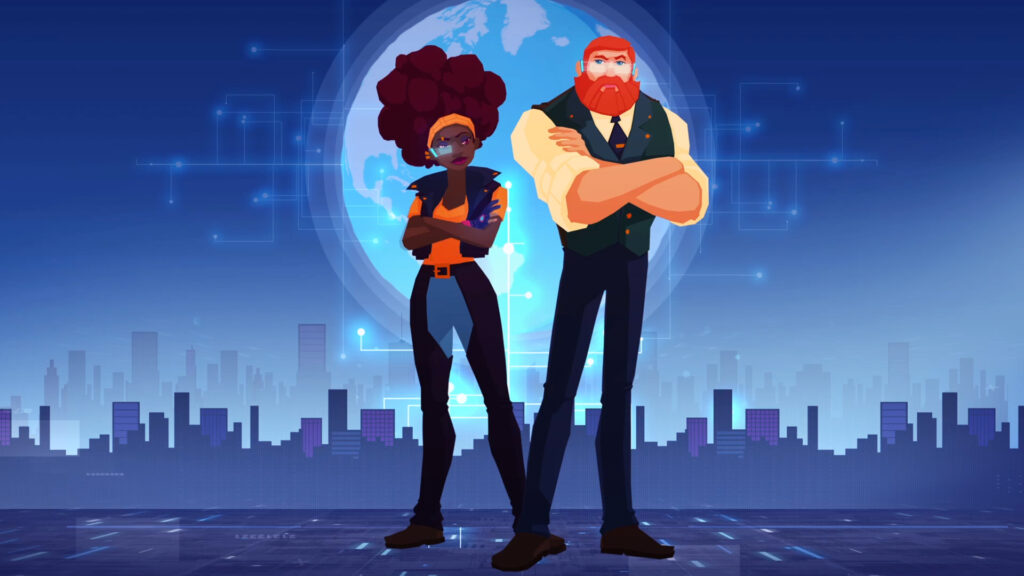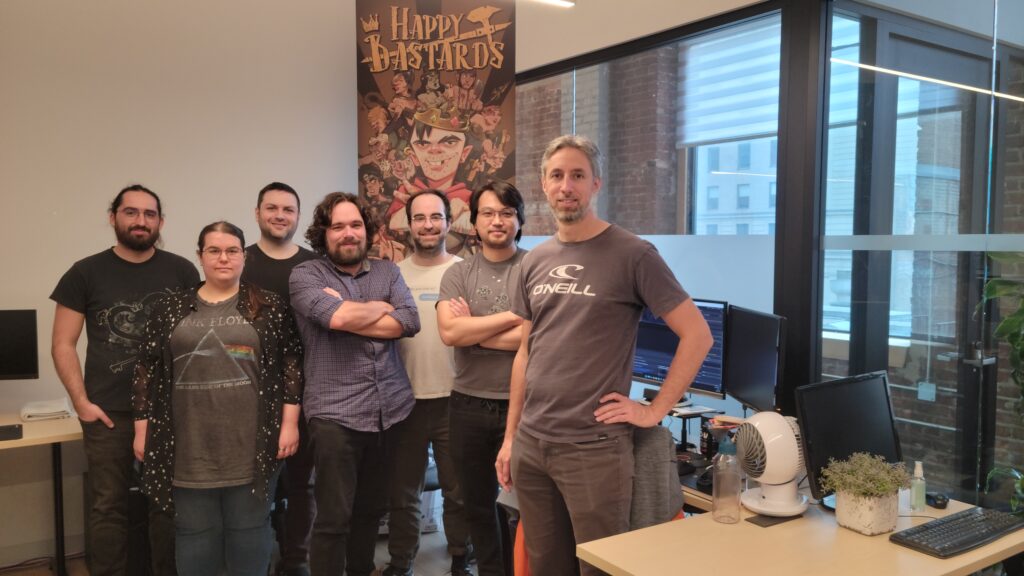The Evolution of Clever Plays (and How We Design Games)
Clever Plays Co-Founder and Game Director, Mattieu Begin, sits down to review the evolution of Clever Plays and unveil a brand new look.

We don’t make it easy on ourselves here at Clever Plays. Every game we make is completely different from the last, not just in genre, but in gameplay style. We take that creative challenge to heart because we’re always looking to see what we can do differently than what’s come before.
Just look at how we started, with a magic-meets-cyberpunk action roguelite (Leap of Fate). Our second game, an asymmetrical two-player espionage game (Operation: Tango). Now, we’re building out a twisted take on open-world tactical RPGs where everyone is in it to get famous or die trying (Happy Bastards).
We’ve been actively thinking about the first 10 years of our journey, about where we started and where we’re heading. A lot can change in a decade and we realized it was time for us to redefine who we are as a studio.
So where better to explain the journey of a small game studio than here? We’d love to share our mission at Clever Plays while both looking back – and looking ahead – at what we’re creating.
…and, yes, show off our new Clever Plays logo.
WHY IS THE LOGO CHANGING?
Admission time: The original logo was created with very little forethought. After all, a new studio needs a logo–so we made one–even if we didn’t know where the Clever Plays adventure would lead us. As an indie, surviving your first game is an immense challenge. That’s all we were focusing on at the time. Nonetheless, a logo must have meaning. The two characters evoked chess pieces, which for me is the origin of all games, and the two characters facing off represented competition and challenge, something that is at the core of many games.
One character was from a fantasy setting and the other from a scifi setting, and this was chosen to represent the power of games to let the player get immersed in an imaginary world. We were proud of what that logo represented and kept it for 10 years.
Ten years and three very different games later, we have a much clearer perspective. After a lot of reflection, we summarized our thoughts into our mission:
“Our game development journey is never bound by convention or genre. We tackle ideas that challenge us so we can deliver bold and memorable experiences to our players. Forever curious. Always creative. We are Clever Plays.”
We needed a new logo to reflect what we’re saying here.

This profoundly feels like us. Reaching for a key is very video-gamey, but it also hints at our never-ending creative aspirations. Similarly, the arm and key are not bound by the logo box, which represents how we always try to think different when it comes to design. The visual style also feels like us, with stylized simplified graphics. We want it to feel memorable and bold, just like the game experiences we aim to create.
Now that I’ve walked you through where we are at, let me show you how Clever Plays got to this point. Here’s how it all started, from my perspective as co-founder and game director of the studio.
WHAT INSPIRED ME TO LEAVE UBISOFT
Around 2009, when Indie games were starting to come into their own, I was playing Supergiant’s Bastion. When I got to the credits I saw that it was such a small team that had created this fantastic game. I realized you can actually create a game with a small squad.
At that time, I worked on these huge teams at Ubisoft and every small decision would take forever to implement. Between that – and seeing how amazingly creative these indie games could be – I just knew I wanted to do that.
So I quit my job at a big studio to create my own games in 2014. It was two artists, two programmers, and me as the game director. That’s when the adventure truly began.

Leap of Fate Character Art
TAKING A LEAP OF FATE AND EARLY GAME STUDIO LESSONS
Sometimes, people have a dream game and they form a company to create that. Me? I was more pragmatic. I looked around at what was happening at the time and tried to spot coming trends. We’re talking about the early days of iPad and the idea of procedural generation of maps sounded interesting – and manageable – for a small team. Back then, I was playing The Binding of Isaac, Spelunky, FTL…and those pushed me in a direction.
Our very first game, Leap of Fate (2016), was more about learning lessons. How to create – and ship – a game was an experiment in every sense of the word. Yohan (the art director and main artist since the start of the studio) and I sought to create an action roguelite—mixing the occult and cyberpunk. We were on the right track, but, like I said, it was a start for our tiny team.
Refine the gameplay loop early on – and keep working on that throughout. Prototype it to hell. That’s what I’d remind myself if I could go back now.
I learned not just about what it takes to build all aspects of a game, but also what’s needed to build a studio. We spotted emerging trends and we were there, but the other important lesson: You need to think about development AND how you’re going to market the game once it’s ready to launch. While it was hard to get the word out about games eight years ago, that’s an even more important thing to take to heart now. Don’t wait to set up your marketing plan!
If we went from there to making Leap of Fate 2, I would be looking at how I could improve upon what we’ve done before, but it wouldn’t satisfy the team. If you’ve worked on one thing for three years you got to do something else!
What’s great about having your own studio is that you challenge yourself. If I don’t come up with something creative, it’s my fault. I need to force myself out of my comfort zone to create…and, yes, I know it’s kind of masochistic in a way, but it opens up all these opportunities and ideas.
Leap of Fate was a game that was intentionally dark and depressive (inspired by the likes of the Vertigo comic, Hellblazer). But that tone did not seem to resonate too much with players. For the next game, we set out to create a more uplifting feeling from the moment you grab the controls.
So, of course, we needed to change everything. We had to go bright, technological, and campy with it.

Operation:Tango original character concept art
IT TAKES TWO TO [OPERATION] TANGO
Remember how I started this by saying we don’t make it easy on ourselves? Our second game, Operation: Tango, was completely different in every conceivable way from Leap of Fate. There weren’t many practical game assets or technical pipelines or design learnings that would help us move into our new project–an asymmetrical spy-themed escape challenge adventure.
It was very obvious (to us, around 2017) that multiplayer games were very popular and people enjoyed playing co-op games with friends. Now, I’m a big board gamer and one thing I’ve always loved is asymmetrical play. Different people have different roles in the game and have different experiences. I love the idea that my friends I’m playing with aren’t just carbon copies of me, they are having their own experience while still playing with me.
I wanted to make a game that it matters who you’re playing with — and that communication and collaboration is the key to victory. We didn’t want to create an experience where it’s just one more gun shooting on your side. However, we didn’t just wake up and say, “let’s make a game with a hacker and a spy working together.” It took a lot of time, exploring and experimenting. We batted around a LOT of ideas for how this game could work.
After playing Keep Talking and Nobody Explodes, things began clicking into place. That is a simple puzzle game, but it got me thinking about what if this was a role-play experience with more of a narrative, a relationship between two characters. Not just between you and your friend playing, but the Spy (Angel) and Hacker (Alistair) in Operation: Tango.
It’s funny because some people say it’s a puzzle game. I would say that it’s more a role-playing adventure game about talking with your friend. Technically, both are right!
My goal with Operation Tango was to create something unique that people would remember – and we’ve been very happy with the results. So what do we do? Create a sequel because we got a bunch of great reviews and a terrific fanbase for the game? Nope! Time to start all over. Again. (By the way, if you’re an Operation: Tango fan reading this, thank you so very much! We truly appreciate your support!)

Clever Plays production team working on Happy Bastards
…HAPPY BASTARDS, DESIGNING GAMES
Unlike our first two games, we didn’t start our idea for Happy Bastards around a market trend. It goes all the way back to my childhood, playing Dungeons & Dragons. That whole notion of recreating the ridiculous situations we’d get into around a gaming table aren’t really as present in videogames. My friends always loved exploring what they could do in these fantasy worlds. Or, more accurately, what they could get away with while adventuring. It was about living above the law, bending the rules and if that occasionally meant being a “bastard,” so be it. Now, this is an important distinction—it isn’t about being a good guy or a bad guy, as it’s done in a lot of video games. It’s a gray area. I talked a little about this when we first revealed Happy Bastards at Summer Game Fest, but the best way to sum it up: What would players really do when nobody’s judging them?
I was inspired by things like Zogonia (a comic that originally appeared in Dungeon Magazine back in the day) that made fun of fantasy tropes and highlighted how most people played “for real.”
As we circled around this concept, we kept seeing this as a niche that hasn’t been filled and a chance for us to try something different. The very first iterations were very different from where we are now, though it had the same high-level idea.
The first idea we had for something in this Happy Bastards world was actually more focused on the player “competing” with other adventurers in your party so that you could improve your standing.The player would start as the low-level scrub of an adventuring party getting all the crap jobs until working your way up to become the most famous one. We did a LOT of prototyping, from autobattlers where you would babysit the mess your adventurers made to a team-building RPG of sorts where you’d have to convince your party to let you advance.
That’s an important lesson: No idea can be precious. Always dive in and do a quick exploration, but also give yourself a bit of a timebox. Maybe a couple weeks, maybe a couple months, but give yourself an end-date to see if the concept works.
In all those cases, though, the gameplay just didn’t feel right.
At some point during prototyping, we had an open world populated with heroes, and interacting with these heroes (helping or hindering their quests) was the game’s main way to progress. It was very sandbox-y, and you could perform any action on any hero and befriend or attack anyone!
Combat was just with two characters—you and your current hero ally. That version clearly had potential but it was missing something crucial: There was not enough granularity, not enough things to play with.
That’s when I discovered Battle Brothers, which had a similar world structure with one key difference: Instead of just being a solo character, BB focused on hiring and managing a band of mercenaries. Adding that mercenary band concept to our existing sandbox-y approach to character interaction became the foundation of Happy Bastard’s gameplay
THE ART OF STARTING OVER
So, while it may sound masochistic that we literally start over from scratch with every game, we’re anxious to tackle new challenges, we are getting better at refining our iterative process…and zeroing in on what we want to bring out in each new game that we explore.
It’s an ongoing lesson where we get better at what we do (and learning what not to do). That’s a good thing. We need to first focus on what the players of a genre expect and build it out from there and that’s what we’ll continue to do here.
Every business person I meet tells me how nuts it is to start over from scratch – even after a successful game – but where’s the challenge in that?!?!
WANT TO LEARN MORE ABOUT WHAT WE’RE DOING? HANG WITH US!
Believe it or not, this is just a quick peek into the process! Would you like to read more like this as we explore how we make our games?
Let us know here, our social channels, and our Discord! We’re always excited to not just talk about the games we’re making, but the games we’re playing and how we’re crafting what comes next.




